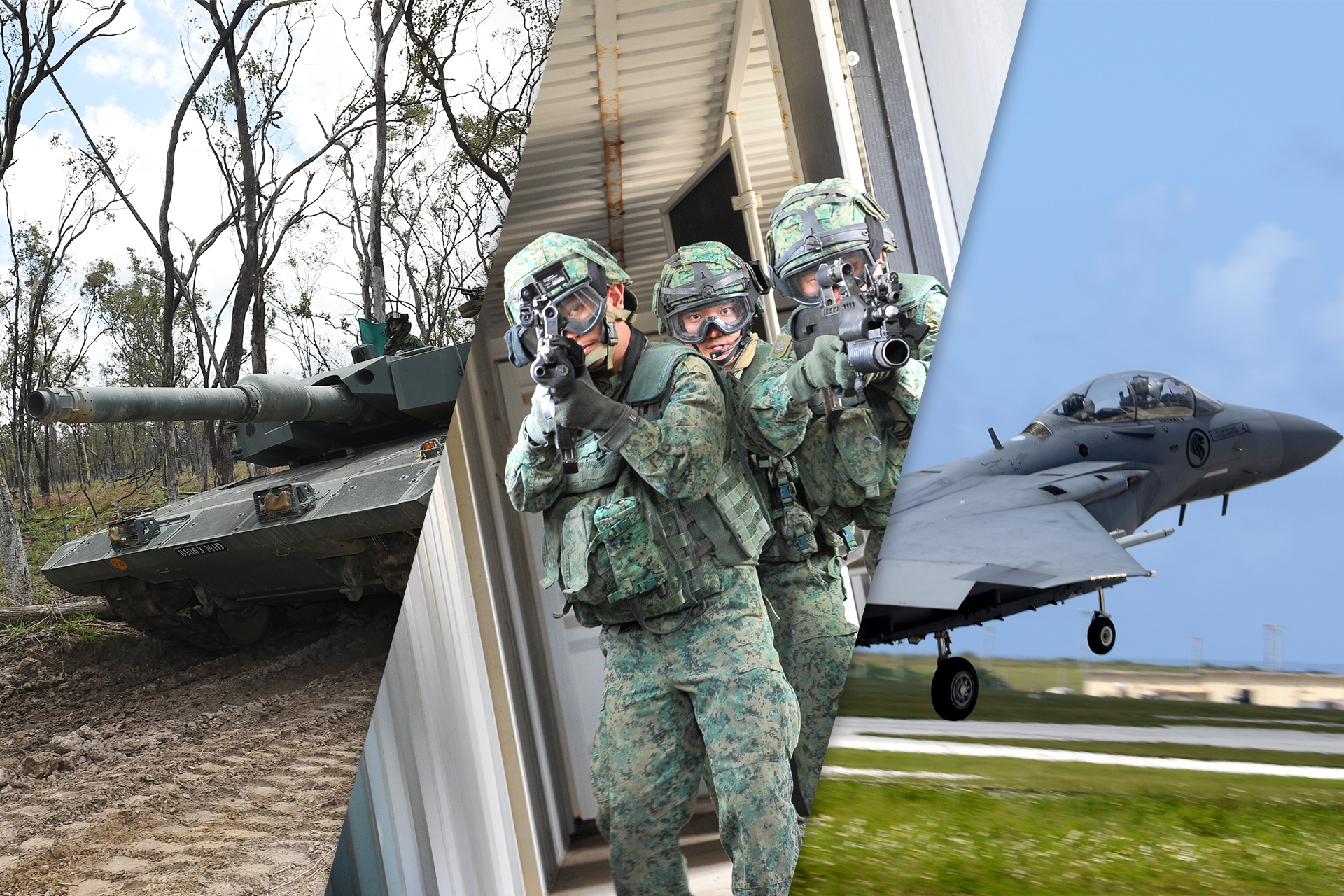ADVANCED FACILITIES TO BE DEVELOPED TO TRAIN NEXT-GEN SAF
MODERN TRAINING FACILITIES WILL BE COMPLETED IN AUSTRALIA AND GUAM BY 2028 AND 2029 RESPECTIVELY TO ALLOW FOR COMPLEX AND REALISTIC TRAINING ON A MUCH LARGER SCALE.
The Singapore Armed Forces (SAF) aims to build the best facilities to train for the threats of today's uncertain security landscape, and a key effort is modern instrumented training ranges in Australia in a combined area that is 10 times the size of Singapore.
The training areas in Australia will allow for integrated air-land live-firing training as well as urban operations live-firing training. These will be conducted at next-gen training facilities set to be completed in the Shoalwater Bay Training Area by 2024 and Greenvale Training Area by 2028.
When the facilities are completed, the SAF will be able to train up to 14,000 personnel in Australia, for over 18 weeks a year.
More complex & realistic training
A key modern facility will be the Combined Arms Air-Land Ranges (CAALRs). These will allow the Singapore Army and the Republic of Singapore Air Force (RSAF) to conduct brigade-level joint training. This means that assets such as the High Mobility Artillery Rocket System, Hunter Armoured Fighting Vehicle, F-15SG fighter aircraft and AH-64D Apache attack helicopter will be able to train together and conduct integrated live-firing training in the same space.
Likewise, the Urban Operations Live-Firing Facilities will allow air and land combined arms live-firing within a realistic urban environment. The next-gen facilities will also be equipped with advanced targetry and instrumentation for more realistic missions.
"In essence, we can conduct complex training on a much larger scale, that only a few militaries are able to, elsewhere," said Defence Minister Dr Ng Eng Hen during the Committee of Supply debate on the defence budget in Parliament on 2 Mar.
High-end air combat training
The RSAF will set up a fighter training detachment in Guam, to be completed by 2029. This follows the Memorandum of Understanding between Singapore and the United States (US) signed by Dr Ng and US Secretary of Defence Mark Esper last December.
The total training airspace – off Guam and the Northern Mariana Islands – will be more than 80 times the size of Singapore. It includes a live-firing area where the RSAF will be able to deploy advanced munitions.
It will also allow the RSAF to deploy its F-15SG and F-16 fighter aircraft as well as supporting assets like as the Gulfstream 550 Airborne Early Warning for large-scale, air-to-air and air-to-ground training.
Since 2017, the RSAF has periodically deployed its F-15SGs to train in Guam.
"The vast airspace (in Guam) allows us to maximise our training and train our aircraft and weapon systems to their full capabilities," said Senior Lieutenant Colonel (SLTC) Mark Tan, who was the Guam Detachment Commander for a month-long detachment there in April 2017.
For example, pilots are able to employ their weapons at long range as well as train their Beyond Visual Range tactics, a form of interception tactics crucial to air combat.
"Our aircrew were able to train for large force employment procedures and we also had the opportunity to train with the United States Air Force, operating alongside their fighter aircraft," SLTC Tan said.
Dr Ng added that the fighter detachment in Guam would complement the RSAF’s other training detachments globally and boost its overall operational readiness.
"This detachment in Guam, alongside other deployments in Australia, India and Thailand, will allow quick re-deployment of assets back to Singapore when required," said Dr Ng.
Summing up the SAF’s vision for world-class training towards a Next-Generation SAF, Dr Ng said: "For conventional operations, the SAF aims to have the best training facilities globally…It is a high mark but we are confident we will achieve this."










